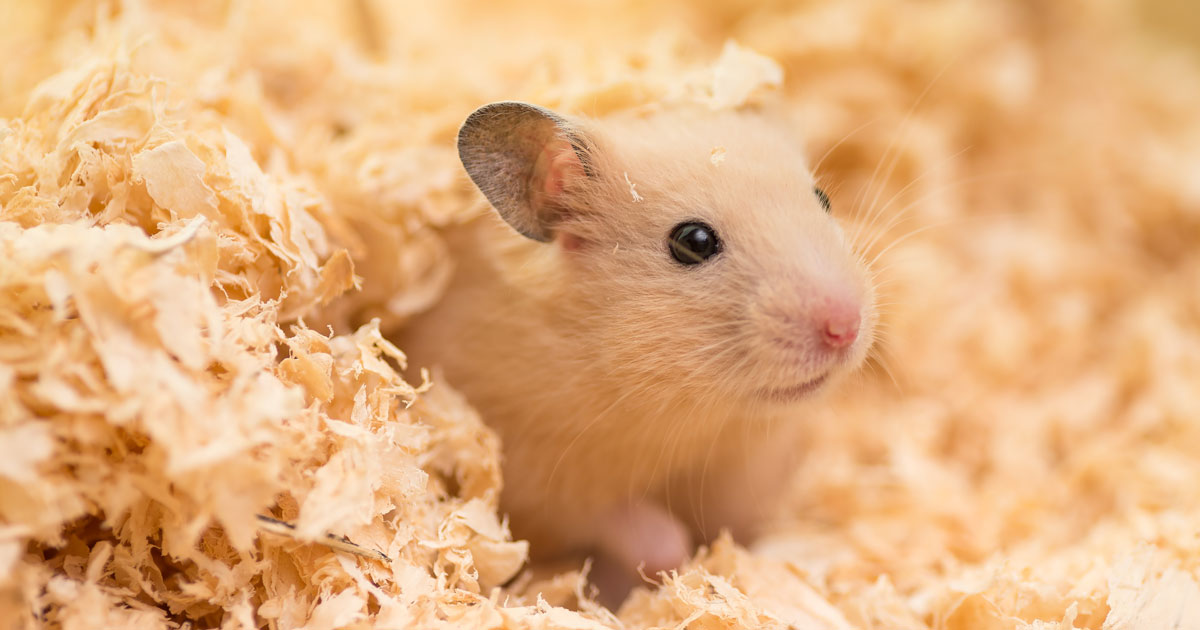23 Jun 2023
Looking after small mammals – hamster care
Benjamin Witcomb explains the basic needs of these popular pets and the VN’s role in supporting owners in caring for them.

Image © stockfoto / Adobe Stock
- This is part of an article titled “Looking after small mammals – rabbit, guinea pig and hamster care”, which was published in VN Times volume 23, issue 6, pages 12-13.
- Looking after small mammals – rabbit care
- Looking after small mammals – guinea pig care
There’s no doubt about it – rabbits, guinea pigs and hamsters will always be popular choices with clients, especially those with small children. As RVNs, SVNs and patient care assistants, we all play a role in sharing advice and knowledge on how to best care for these interesting, and somewhat charismatic, creatures.
The truth is, some may see “small furries” as inferior to the cat or dog, and it may often come as a surprise when a client is willing to spend hundreds of pounds on treatment for their hamster, which has a life span of two to three years. However, any animal can be a companion to someone, and we should always offer honest and heartfelt advice, regardless of our personal views.
Veterinary nurses should have a wealth of knowledge and experience when it comes to offering advice to clients regarding the care and husbandry of “small furries”, including husbandry, diet and general care.

Hamsters
Hamsters are an extremely popular pet and are often seen as a “beginner” pet for small children. However, they require a great deal of attention, and their needs should be met and the correct husbandry provided.
Common breeds of hamster include:
- Syrian: being one of the larger hamster breeds, Syrians are docile and easy to handle (Cosgrove, 2023a)
- dwarf Russian: due to their tiny anatomy, Russian hamsters are fast and agile, but can also give a nasty bite. Russians may be a breed to avoid if an owner is wanting to handle them regularly (Witcomb, 2022)
- Roborovski: even though they are small in size, Roboroskis have quite the attitude, and can be substantially more difficult to tame and handle (Cosgrove, 2023b)
Diet
In their natural environment, hamsters have a varied diet that includes seeds, insects and cereals. This should be replicated in captivity to provide them with as much variety as possible.
A large portion of their diet should consist of dry commercial food, which is available from most reputable pet shops. Dry, commercial diets should consist of a range of seeds and pellets formulated for the specific hamster breed. Small amounts of fruits and vegetables can be offered to most hamster breeds and should consist of greens, root vegetables and fruits, such as bananas and apples (RSPCA, 2023).
Housing
One of the most common problems with hamster husbandry is incorrect or insufficient enclosures. Even though hamsters are small, they love to explore their environment and they should have plenty of space to do so. Minimum cage sizes should not be below a height of 50cm, width of 80cm and depth of 50cm. Bar spacing is also important to avoid escapees, so ensure bars are not larger than 6mm in spacing (Woodgreen, 2022).
Plenty of stimulation should be offered within a hamster’s environment, including hides, tunnels and tubes. In the wild, hamsters naturally make burrows, so adding an adequate amount of substrate to their enclosure is beneficial. Substrate should be natural, dust-extracted and unscented. Popular substrate includes:
- paper bedding
- natural shaving-type bedding (dust-extracted)
- coconut fibre
Health conditions
Hamsters can be predisposed to certain medical conditions, with some being more common than others. Here are some of the most prevalent.
Eyeball protrusion
Eyeball protrusion is where one or both eyes can become dislodged from their sockets. This can be due to trauma, infection or restraint methods.
Sometimes, when hamsters are held too tight, it can cause the eyeballs to dislodge (Quesenberry and Donnelly, 2022).
Wet tail
Wet tail can occur for a variety of reasons including urinary problems, infections and vaginal discharge. The most common cause of wet tail is from the bacteria Lawsonia intracellularis, which causes severe diarrhoea (Hart, 2020).
Symptoms can vary depending on what is causing wet tail, but common signs include:
- diarrhoea
- dehydration
- weight loss
- anoxeria
- death
Treatment options vary depending on the severity of the infection, but usually consist of replacing fluid loss and a course of antibiotics.
Tumours
Unfortunately, hamsters are prone to tumours, which are usually cancerous in nature. In some instances, tumours can be benign and cause no issues.
Dwarf species of hamsters are more likely to develop tumours than other species (Manucy, 2022). Symptoms usually include:
- depression
- lethargy
- noticeable growths
- weight loss
Treatment options are limited, but surgical excision is usually the only option. Euthanasia is a valid treatment option depending on the severity of the tumour and secondary symptoms.
References
- Cosgrove N (2023a). Syrian hamster, Pet Keen (accessed 2 February, 2023).
- Cosgrove N (2023b). Roborovski dwarf hamster, Pet Keen (accessed 2 February, 2023).
- Hart S (2020). How serious is wet tail in hamsters? Vet Help Direct (accessed 18 February, 2023).
- Manucy T (2022). Tumors and cancers in hamsters, Pet MD (accessed 18 February, 2023).
- Quesensbury KE and Donnelly TM (2022). Diseases and disorders of hamsters, MSD Veterinary Manual (accessed 10 February, 2023).
- RSPCA (2023). What to feed a pet hamster (accessed 20 February, 2023).
- Witcomb B (2022). Why does my hamster bite? Vet Help Direct (accessed 18 February, 2023).
- Woodgreen (2022). How to make your hamster feel at home (accessed 2 February, 2023).
Meet the authors
Benjamin Witcomb
Job Title